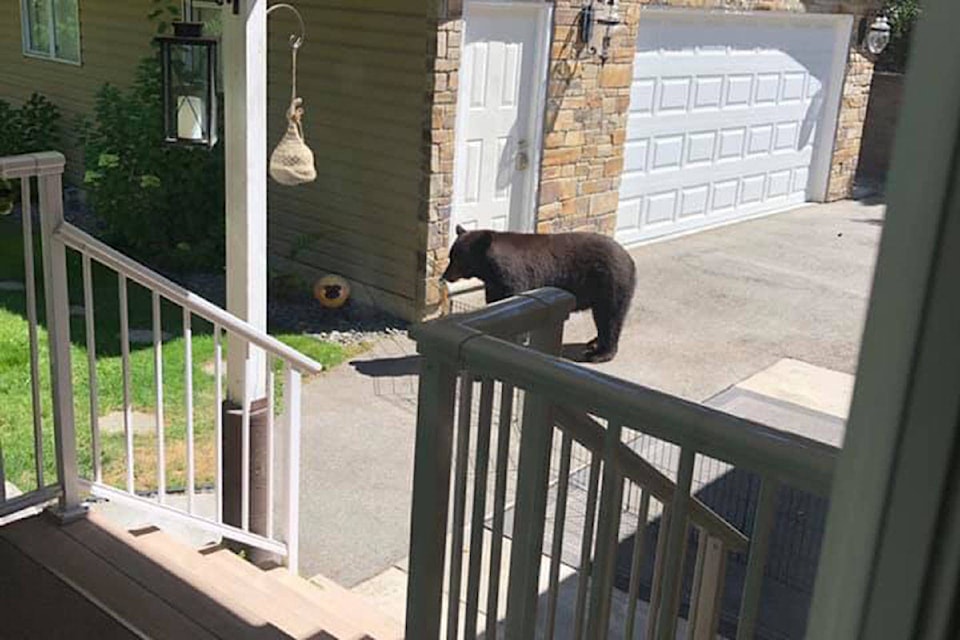It’s getting to be the time of year when resident black bears are looking to increase their caloric intake to prepare for hibernation.
Zoe Kirk, wildlife special projects coordinator with RDOS, said when bears come out of the den in the spring, they eat roughly 4,000 calories a day.
But as the fall hits, the calories required for hibernation increase to 20,000 to 24,000 a day. This means bears could be foraging for food for 20 to 24 hours a day.
READ MORE: ‘Just strolling in front of our house’: Penticton residents spot black bears around town
“They are eating machines. If we think of bears as eyes, nose and stomachs of superior acumen, then that’s why we get into trouble with bears in the spring and the fall.”
Bears enter a phase called hyperphagia, which is a scientific word for “gluttony,” Kirk said, or an abnormally increased appetite for food.
“In August, they are just in that trigger point of hyperphagia so that can push them into communities or to places where they can smell a very quick reward — which could be a bird feeder, which is a 5,000 calorie hit,” she said.
Right now, Kirk said she has received reports of bear sightings in the evening around Naramata, a bear smart community, as well as Kaleden. On Monday evening, a female bear with her cub even managed to get into a resident’s shed in Naramata.
“I am hearing them starting to move through yards and down at the creek, waiting for the kokanee salmon to come up. As it’s getting dry up on that ridge, the bears are going to be coming down from the Heritage Hills area. Same with Kaleden.
READ MORE: Garbage habituated bear euthanized in North Okanagan
“This is the time we all need to be hyper-vigilant about our attractants because we want to keep them looking for natural food sources and not in our garbage.”
Kirk explained bears can smell something like a peanut butter sandwich from a kilometre and half away.
“They smell everything,” she said. “Our garbage cans become like a smorgasbord. It’s definitely how we manage our properties that can lure a bear onto our properties at this time.”
As well, residents who are out in the corridor areas should be “hyper-alert” for bear activity, Kirk added, such as scratches on trees.
“If you are picking wild berries, you can expect that you’re going to have company because they are going picking wild berries too. Take precautions. Make sure you have your dog leashed and avoid those feeding areas or wildlife corridor areas between dawn and dusk.
“It’s going to be as we move into September when the temperature gets to about eight or 10 degrees overnight, that’s when those bears are going to start being driven to get the fat before going to den.”
To report a typo, email: editor@pentictonwesternnews.com.
<>@PentictonNews
newstips@pentictonwesternnews.com
Like us on Facebook and follow us on Twitter.
